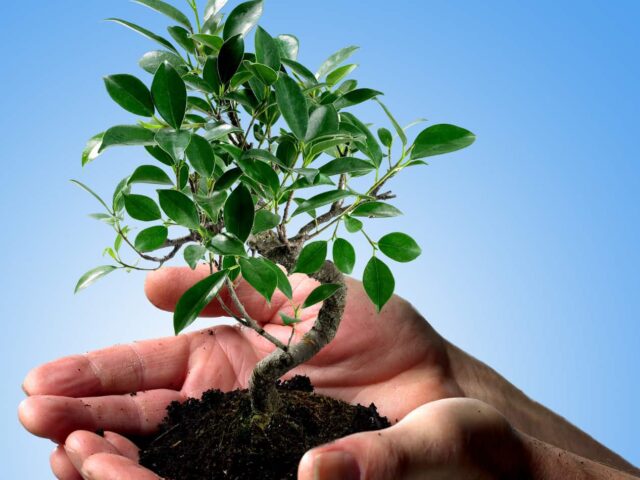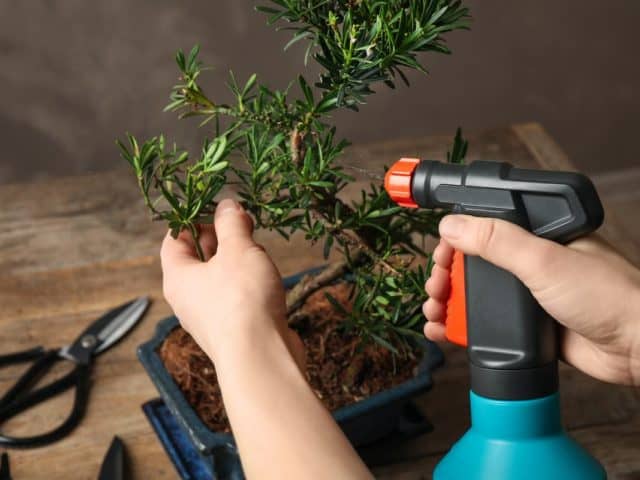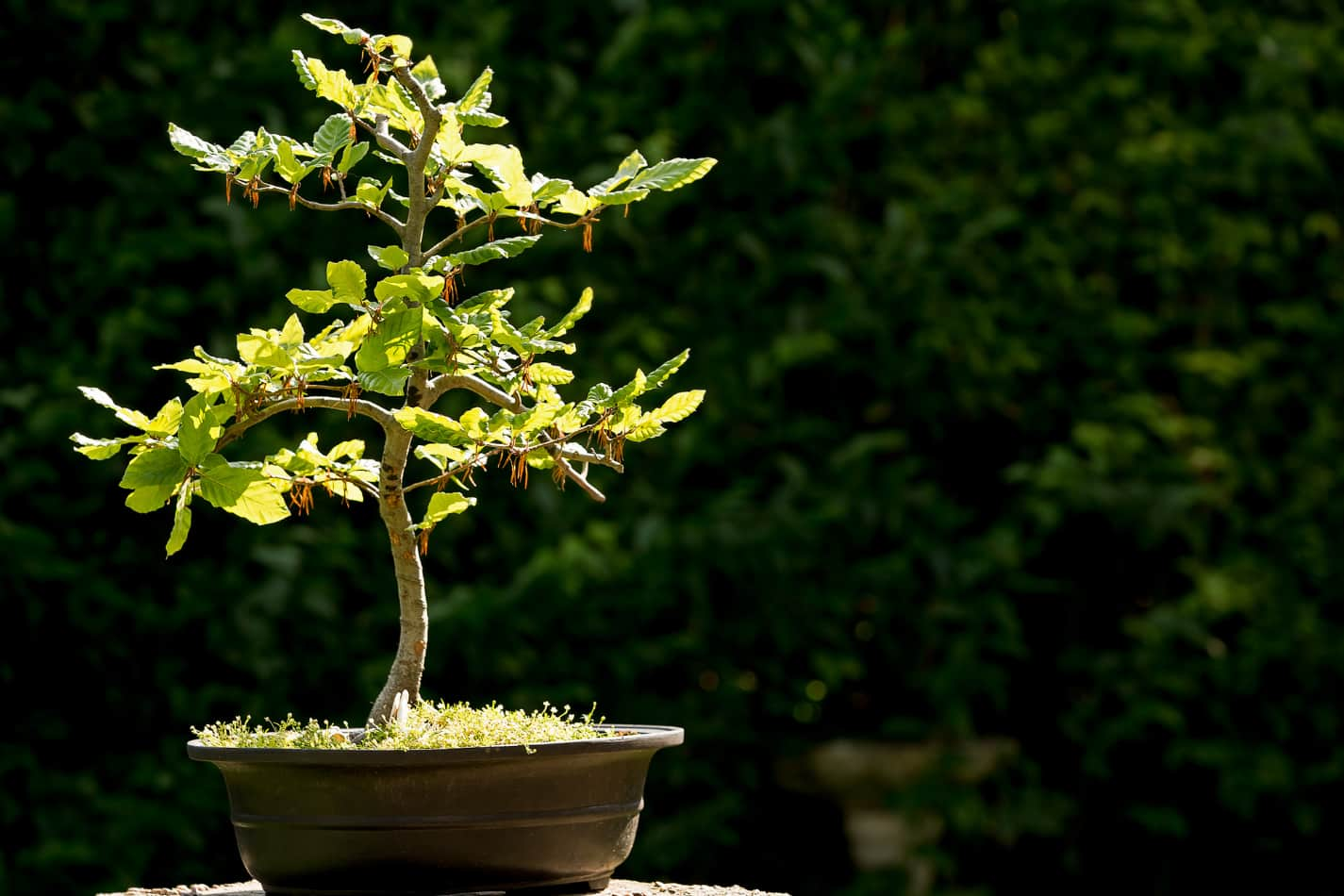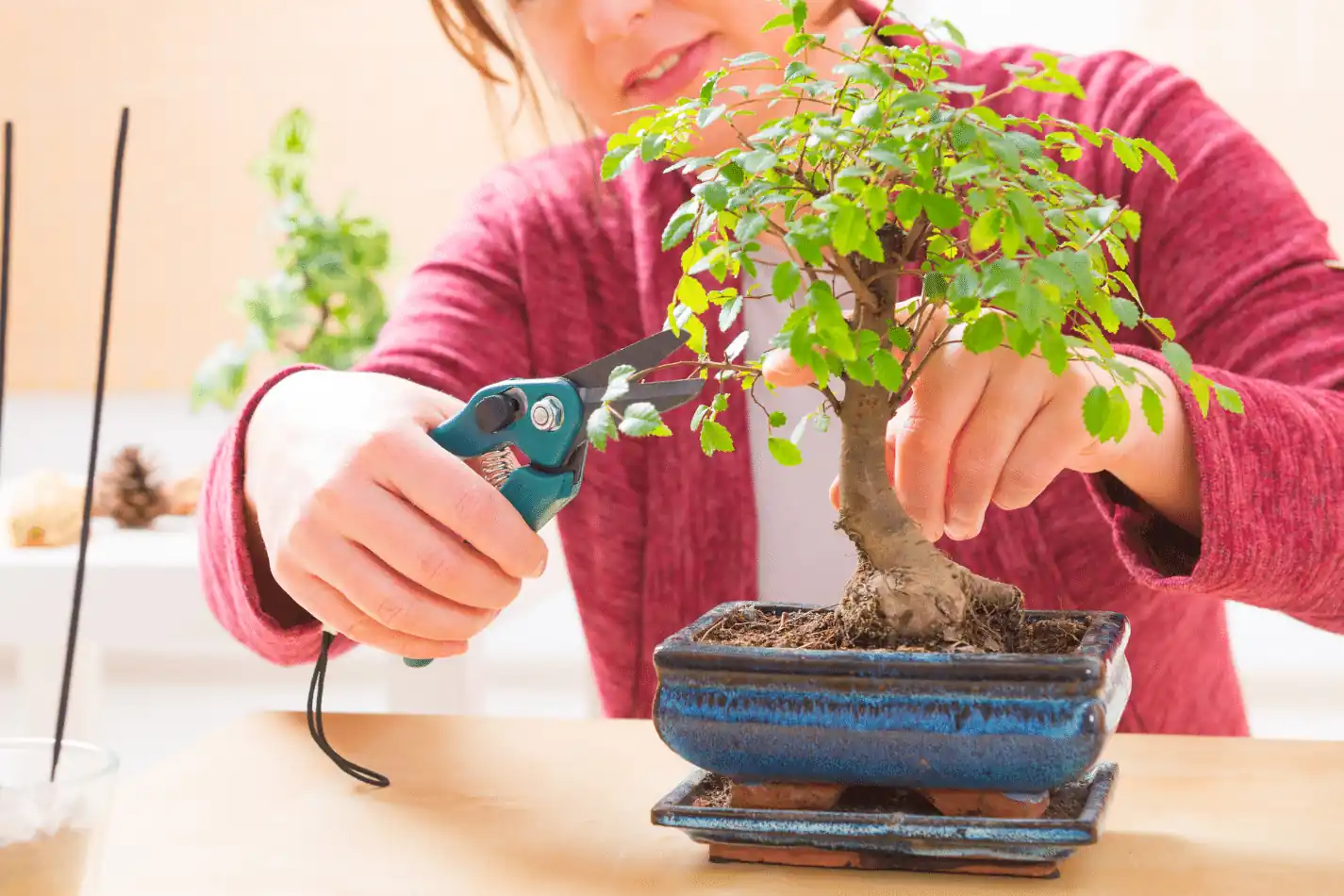When it comes to bonsai, did you know that a significant percentage of enthusiasts consider Yamadori bonsai to be the most captivating specimens?
The allure of a Yamadori bonsai lies in its untamed origins and the journey it undertakes from the wild to your garden.
But what exactly sets these bonsai apart and why are they so highly regarded?
Let’s explore the intricate world of Yamadori bonsai and uncover the secrets that make them truly special.
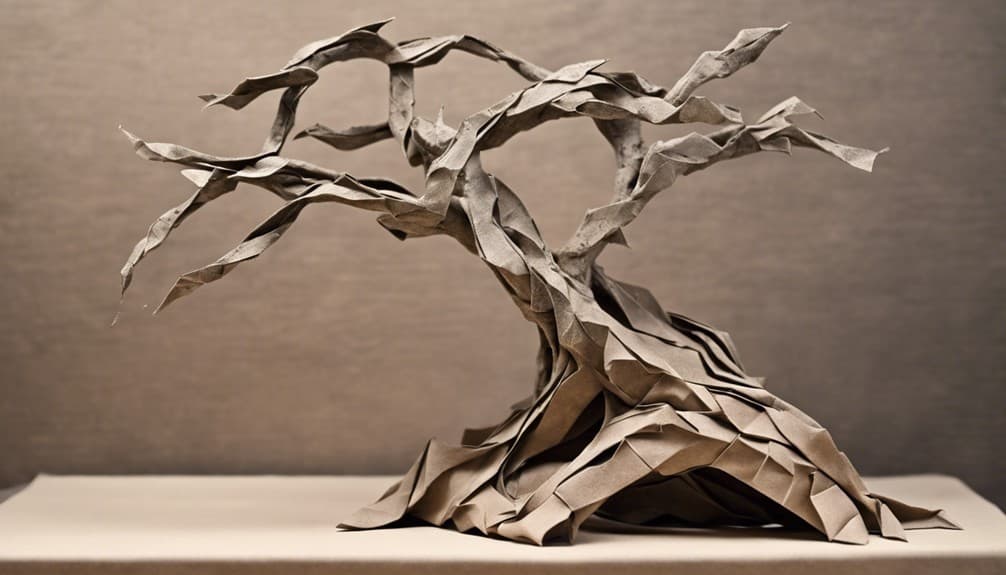
Key Takeaways
- Yamadori Bonsai are wild trees prized for unique shapes and aged character.
- Collecting yamadori requires experience, luck, and ethical considerations.
- Yamadori trees reflect resilience, untamed beauty, and rugged charm.
- Conservation efforts are crucial to protect wild trees and prevent overharvesting.
Yamadori Bonsai: Definition and Origin
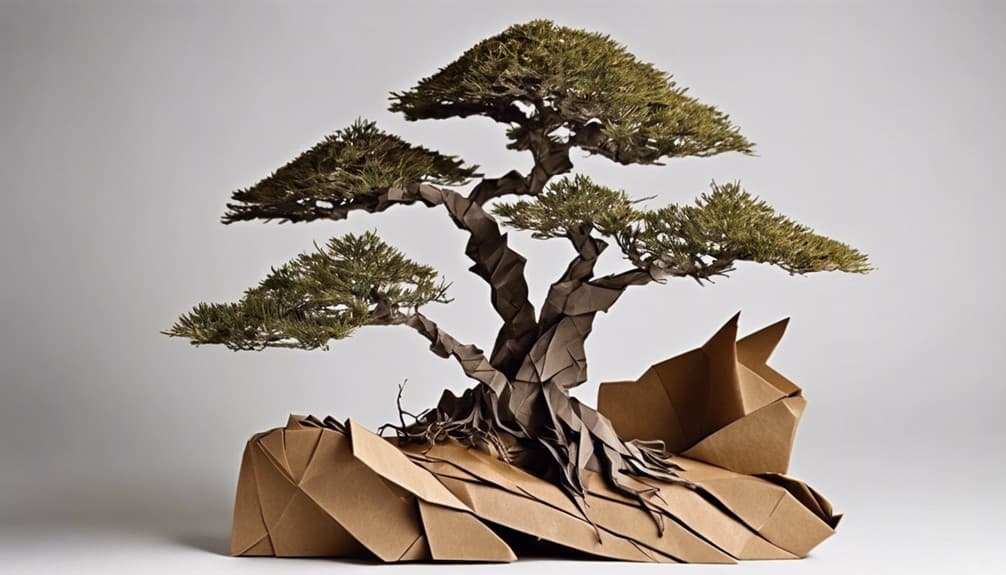
Yamadori Bonsai, originating from the Japanese term meaning ‘mountain tree,’ are wild trees prized for their unique shapes and aged character, collected for cultivation in the art of bonsai.
The practice of collecting Yamadori trees involves a deep appreciation for nature’s artistry and the stories these trees carry from their wild habitat.
Their twisted trunks, intricate bends, and weathered features showcase the resilience and beauty of trees grown in challenging environments.
The origin of the term ‘Yamadori‘ underscores the wild nature of these trees, emphasizing their rugged beauty and connection to natural landscapes.
When collecting Yamadori Bonsai, it’s essential to have experience in identifying suitable specimens, understanding the specific needs of each tree species, and employing proper care techniques to ensure their health and development in a cultivated setting.
The journey of collecting Yamadori trees isn’t just about acquiring plants; it’s a profound experience that bridges the gap between the untamed wilderness and the meticulous art of bonsai cultivation.
Nursery Bonsai Vs. Yamadori
When comparing nursery bonsai to yamadori trees, the origins and cultivation methods of these distinct bonsai types reveal significant differences in their characteristics and aesthetics.
Nursery bonsai are cultivated in controlled environments, typically at a younger age, lacking the aged character and unique stories found in yamadori trees.
In contrast, yamadori bonsai are trees collected from the wild, showcasing natural shapes and movements developed in their natural habitat. Unlike nursery bonsai, which may be styled by humans, yamadori bonsai reflect the struggle for survival they faced in the wild.
Collecting yamadori bonsai requires experience and luck to find desirable native species that are often rare in nurseries. The process of collecting these trees adds an element of adventure and discovery to bonsai cultivation.
Yamadori bonsai enthusiasts appreciate the untamed beauty and rugged charm that these trees naturally possess, distinct from the carefully nurtured and shaped nursery bonsai.
Tools and Techniques for Collecting

To successfully collect yamadori bonsai, utilize a set of essential tools including loppers, a saw, a pick, a shovel, and a mattock. The loppers are ideal for cutting branches, while the saw helps in cleanly severing larger roots.
A pick can be used to carefully loosen the soil around the tree, and a shovel aids in lifting the tree with minimal disturbance to the root system. The mattock is useful for tougher roots and compacted soil.
When collecting yamadori, it’s crucial to dig around the tree, ensuring to preserve as much of the root system as possible. Wrapping the tree in sheets helps maintain moisture levels and prevents drying out during transportation.
Once collected, planting the yamadori in a suitable soil mixture in a large pot with proper drainage is essential for its successful establishment as a bonsai. Remember to mist the foliage regularly to help the tree adjust to its new environment.
Caring for Yamadori Trees
Properly caring for newly collected yamadori trees involves providing essential aftercare to facilitate their successful acclimatization to their new surroundings.
It’s crucial to maintain a damp, but not wet, soil condition to ensure the health of the yamadori trees. Avoid exposing them to direct sunlight initially, as this can stress the tree.
Waiting until the following spring for any styling or repotting activities allows the tree to acclimate and recover from the stress of being collected. During the first summer, it’s advised to use minimal fertilizer to prevent overwhelming the tree’s system.
Where to Find Yamadori Trees

After ensuring the health and acclimatization of your newly collected yamadori tree, the next step is to explore where these unique trees can be found in their natural habitat.
Yamadori trees can be discovered in various wild locations such as mountains, flat lands, and even desert areas. Trees that have endured harsh conditions tend to develop distinct characteristics like twists and dead branches, making them ideal candidates for bonsai cultivation due to their aesthetic appeal.
Aside from wild yamadori, urban yamadori presents another avenue for enthusiasts. These trees can be stumbled upon through chance encounters in urban settings, as well as sourced from nurseries and landscapers.
Engaging with property owners and nurseries can open up opportunities to acquire urban yamadori for your bonsai collection.
It’s advisable to educate yourself thoroughly before collecting, and considering purchasing from experienced collectors can provide valuable insights into the process of acquiring and caring for these unique specimens.
Urban Yamadori: Tips and Tricks
When collecting urban yamadori for bonsai, ensure you have the proper tools like a sharp pair of shears, a root hook, and a sturdy container for transportation.
Successful collection techniques involve carefully digging around the root ball, minimizing root damage, and providing adequate water and sunlight post-collection.
Remember to respect local regulations and obtain permission before collecting urban yamadori trees.
Urban Yamadori Tools
Equipped with loppers, saw, pick, shovel, and mattock, urban yamadori enthusiasts navigate urban landscapes to collect bonsai trees effectively and safely. These tools are essential for extracting landscape shrubs and trees while minimizing damage.
Loppers are handy for cutting smaller branches, while a saw can tackle thicker ones. The pick helps loosen soil around the roots, and the shovel assists in digging out the plant. A mattock is useful for breaking up hard soil and rocks.
Having the right urban yamadori tools is crucial for successful collection, as they allow you to navigate the challenges of urban environments and increase your chances of finding unique specimens for your bonsai collection.
Successful Collection Techniques
Navigating urban landscapes armed with essential tools like loppers, saws, picks, shovels, and mattocks is crucial for adeptly collecting bonsai trees, especially when practicing urban yamadori.
Successful collection techniques in urban areas require careful planning and execution. When collecting urban yamadori, ensure you have permission from property owners or purchase from reputable sources. Assess the health and history of the trees to gauge their adaptability as bonsai.
Urban yamadori trees may exhibit unique characteristics due to their urban environment growth. Engage with experienced collectors to learn effective techniques and strategies. Remember, patience and attention to detail are key when collecting urban yamadori for successful bonsai cultivation.
Mastering these techniques will enhance your urban yamadori bonsai journey.
Ethical Considerations in Yamadori Collection

To ensure the responsible collection of yamadori bonsai, thorough understanding of the legal requirements and proper tree selection is imperative.
Leading Bonsai experts emphasize ethical considerations in the living art of yamadori collection. Legal aspects vary based on location and species, necessitating research and permits for ethical practices.
Selecting only suitable trees with small leaves, interesting bark, and good ramification is crucial for ethical yamadori collection. Careful collection methods, such as proper tools and techniques, must be employed to preserve the health and aesthetics of the trees during extraction.
Illegal collection not only harms ecosystems but also can lead to fines or penalties, underscoring the importance of ethical practices. Conservation efforts play a vital role in protecting wild trees and preventing overharvesting, highlighting the necessity for ethical considerations in yamadori collection.
Conclusion
In conclusion, Yamadori bonsai trees offer a unique opportunity to connect with nature and create stunning bonsai specimens with character and history.
By understanding the process of collecting and caring for Yamadori trees, you can develop a deeper appreciation for these resilient and beautiful creations.
Remember to always approach the collection of Yamadori bonsai with respect for the environment and a commitment to ethical practices, ensuring the continued preservation of these natural treasures.

